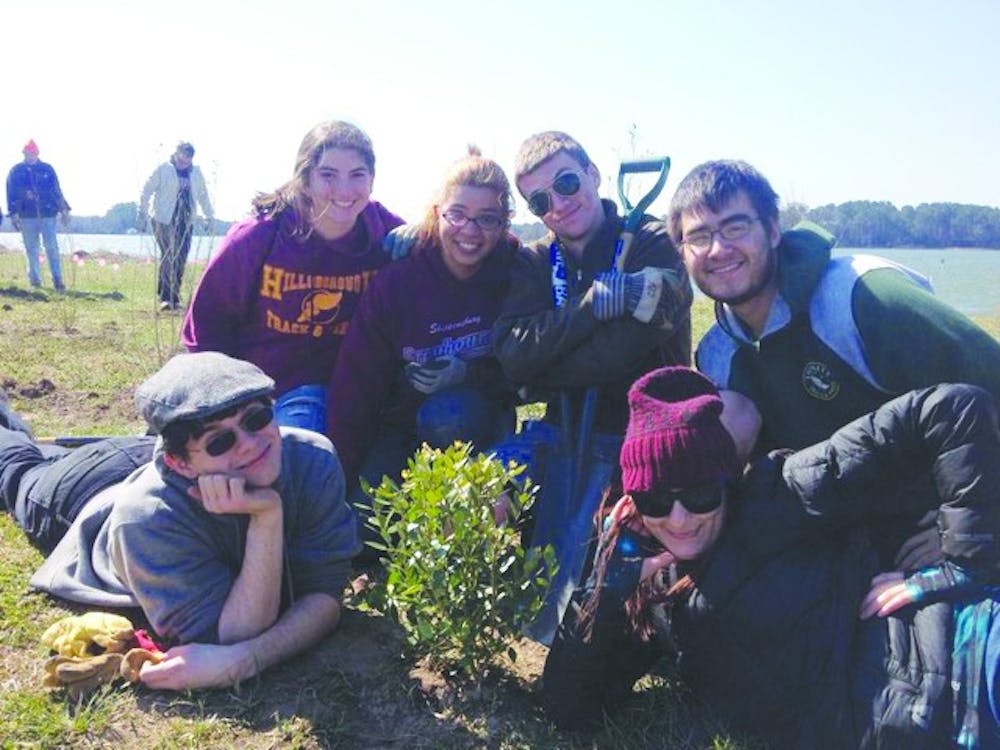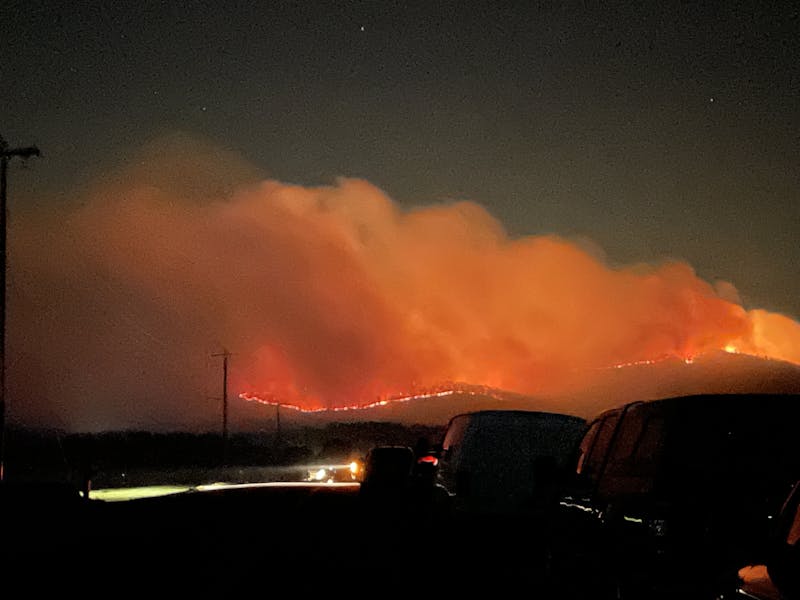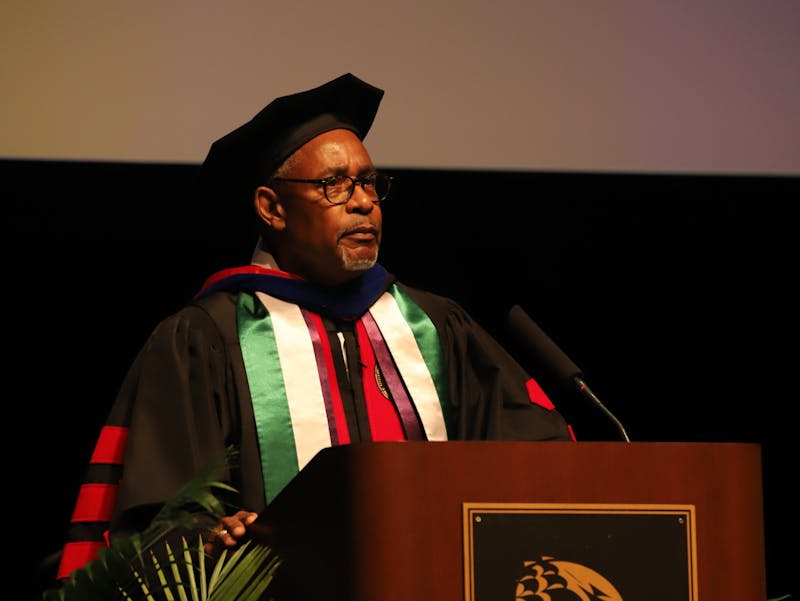Over spring break, 14 students and one faculty member represented the Shippensburg University Geography and Earth Science Organization (GESO) at Wallops Island, Va., to volunteer their skills and services to the Chincoteague Bay Field Station of the Marine Science Consortium.
From March 14–17, the volunteers joined representatives from several regional universities in a collective effort to complete conservation-related projects for the consortium’s annual Alternative Spring Break Weekend. Shore People Advancing Readiness for Knowledge (SPARK), an organization made up of middle- and high-school-aged students that has been professionally recognized by the Commonwealth of Virginia for its environmental education and restoration efforts was also a part of the project. A total of 98 volunteers took part in the event.
According to Marisa Sames, president of GESO, tasks included everything from controlling invasive weeds to building kayak stands and racks, to painting and even assembling aquariums.
“The field station always loves having us. We provide the gift of our time and energy into something so important,” she said. “They couldn’t be the awesome place they were without the work we put in, in such a short amount of time.”
“We were involved in a huge, massive road cleanup, in which we gathered over 900 pounds of trash in a few hours,” said Sean Cornell, associate professor of geography and earth science. “There were 26 community volunteers who just came out to help, which is fantastic.”
Cornell said the group also focused on preservation of habitats for pine back beetles, a species which has been threatened in recent years due to a lack of attention by professional scientists, largely because of lack of funding. In doing so, GESO discovered a new infestation, something Cornell said is unfortunate but has now at least been recognized.
Volunteers also filled 91 oyster bags made by SPARK. “We will deploy [them] in June when Oyster spat is in the water so oysters can settle and grow on them,” said Megan Kelsall, an SU junior and GESO member.
“We filled them each with 120 pounds of oyster shells, which comes out to something like five-and-a-half tons in those mesh bags,” Cornell said. “That’s pretty impressive.”
SU senior Samuel Gau said the group “participated in a shoreline restoration program that involved planting different kinds of trees and shrubs along the shore in order to reduce the rates of weather and erosion along the bay.”
SU has participated in projects like Alternative Spring Break since 2007, the 100th birthday of American marine biologist and conservationist Rachel Carson. Each year since, students must pay only for their transportation to Chincoteague, the event itself is free and open to all students.
Cornell said the next large event planned for GESO will be in May, when the group will participate in the Together Green program, sponsored by Toyota. In November, the group will present its recent accomplishments to the American Estuary Society.
“Shippensburg is setting the pace for the future of conversation,” he said.
“It is great to see our universities being drawn together in ways not seen for quite some time.”
More information on Alternative Spring Break and the Chincoteague Bay Field Station may be found at www.CBFieldStation.org.
Want more news? Visit us on Twitter @ShipUslate or online at www.theslateonline.com.





The Slate welcomes thoughtful discussion on all of our stories, but please keep comments civil and on-topic. Read our full guidelines here.